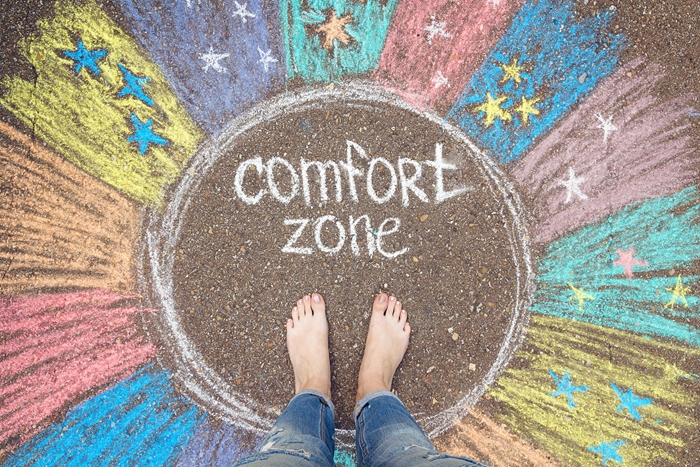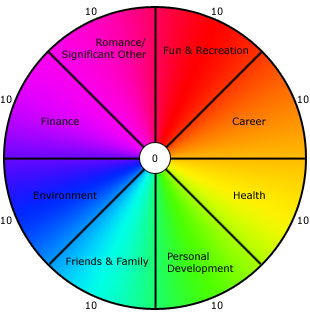January Blues - A Myth or Reality?
Following the festive season and with the magic of Christmas a distant memory, then it is unsurprising that hot on its heels is, in comparison, the very underwhelming and somewhat dreary January. Such is the case that we all hear the term January blues frequently used amongst friends, work colleagues and family. It even has its very own affectionately named Blue Monday which is the third Monday of January and is reportedly the gloomiest day of the year. A result of post-Christmas blues, cold dark nights and the arrival of unpaid credit card bills results in symptoms that can range from simple grumpiness to depressing thoughts. mood swings, feeling low, lethargy, insomnia, stress, bloatedness, sluggishness and add to those a dose of cold or flu and there you have it: the January blues in full swing.
With Blue Monday (21st January) fast approaching, we wanted to see whether there was any truth in the term January Blues and if so what tips and advice we could unearth and share.
Unsurprisingly scientific evidence does indeed show that,
Biologically, the shift in daylight hours can often mean less sunshine exposed on our skin which means a reduction in vitamin D – a vitamin associated with healthy brain function. Vitamin D deficiency can contribute to making us feel low in January and the winter months
Psychologically, the post-festive period can bring a sense of loss, change or mourning after the busy social season. Dealing with post-holiday debt, or having less money available can also make us feel less happy and carefree.
Physically, serotonin is a neurotransmitter located mainly in our gut, and it affects our mood, energy levels and our attitude. A deficiency in Serotonin, caused by over-consumption of alcohol, coffee, a poor diet, stress, lack of exercise and lack of sunlight can contribute to feeling stressed, insomnia and depression.
It is fair to say that the January Blues is, in fact, very real. So, here at glo, let us draw upon our experience within the holistic area of our business and share some useful tips:
Yoga
Backbends and twists are great for combating lethargy, because they affect the spine and activate the nervous system, releasing energy. Supported backbends are a wonderful option if you’re feeling depleted; it can be as simple as lying down with a bolster supporting your middle back, and placing a rolled blanket under the shoulders. But simply moving the body will make the energy start to flow.
Other useful poses include:
Downward facing dog - Having the head below the heart makes this pose an inversion, and inversions relax and soothe the nervous system, as well as shift our perspective.
Cobra - stretch forward into cobra. Backbends are anti-depressant poses. They open the heart and facilitate the breath
Pigeon - Opening up the hips and pelvis allows us to breathe down into our legs and feet, grounding and stabilizing the emotions
The breath is considered the life force in yoga. Try diaphragmatic breathing through the nose. Initially, try it on your back, while in savasana, placing your hands on the belly and chest and noticing the movement of the breath. Make sure the inhale is as long as the exhale and that the belly is moving.
Nutrition
Eating regularly is important to keep blood sugar levels stable and omega-3s, complex carbohydrates, vitamin D, B vitamins, protein and iron, are simple and effective ways to give you that summer smile even on the coldest winter day. Check out the full article on recommended foods from Allison Day and in the meantime below are some of the highlights:
Lentils, like other complex carbohydrates, help to boost the brain’s serotonin levels, your feel-good neurotransmitter. Rich in fibre, protein and an abundance of minerals,
Chocolate - Sipping on hot cocoa is a sure way to not only warm your hands, but can boost your mood, too. A mug of cocoa or square of dark chocolate causes the brain to release endorphins, translating into a positive outlook. Go for bars with 70 per cent cocoa solids or higher and choose unsweetened cocoa powder for best results.
Bananas - A tried and true mood-lifting food, bananas are both perennially available and greatly affordable. Bananas contain complex carbohydrates and are a particularly good source of vitamin B6, needed to convert tryptophan to serotonin, your stay-happy neurotransmitter.
Wild salmon is rich in omega-3s, healthy fats that support proper brain chemistry for happiness, no matter the time of year. Studies provide evidence that omega-3-rich fish, like salmon, can help iron out unhappiness and ease symptoms of depression.
Meditation and Mindfulness

Meditation and mindfulness is a crucial part calming the mind. Try to incorporate a 10 minute morning meditation and again in the evening before bed or join a local meditation class. in the meantime we wanted to highlight some exercises you can try at work or home:
Mindful Breathing
This exercise can be done standing up or sitting down. If you can sit down in the meditation (lotus) position, that's great, if not, no worries.
Either way, all you have to do is be still and focus on your breath for just one minute.
- Start by breathing in and out slowly. One breath cycle should last for approximately 6 seconds.
- Breathe in through your nose and out through your mouth, letting your breath flow effortlessly in and out of your body.
- Let go of your thoughts. Let go of things you have to do later today or pending projects that need your attention. Simply let thoughts rise and fall of their own accord and be at one with your breath.
- Purposefully watch your breath, focusing your sense of awareness on its pathway as it enters your body and fills you with life.
- Then watch with your awareness as it works work its way up and out of your mouth and its energy dissipates into the world.
Mindful Observation:
The exercise is designed to connect us with the beauty of the natural environment, something that is easily missed when we are rushing around in the car or hopping on and off trains on the way to work.
- Choose a natural object from within your immediate environment and focus on watching it for a minute or two. This could be a flower or an insect, or even the clouds or the moon.
- Don’t do anything except notice the thing you are looking at. Simply relax into watching for as long as your concentration allows.
- Look at this object as if you are seeing it for the first time.
- Visually explore every aspect of its formation, and allow yourself to be consumed by its presence.
- Allow yourself to connect with its energy and its purpose within the natural world.
Mindful Listening
This exercise is designed to open your ears to sound in a non-judgmental way, and indeed to train your mind to be less swayed by the influence of past experiences and preconception.
Select a piece of music you have never heard before. You may have something in your own collection that you have never listened to, or you might choose to turn the radio until something catches your ear.
- Close your eyes and put on your headphones.
- Try not to get drawn into judging the music by its genre, title or artist name before it has begun. Instead, ignore any labels and neutrally allow yourself to get lost in the journey of sound for the duration of the song.
- Allow yourself to explore every aspect of track. Even if the music isn’t to your liking at first, let go of your dislike and give your awareness full permission to climb inside the track and dance among the sound waves.
- Explore the song by listening to the dynamics of each instrument. Separate each sound in your mind and analyze each one by one.
- Hone in on the vocals: the sound of the voice, its range and tones. If there is more than one voice, separate them out as you did in step 4.
The idea is to listen intently, to become fully entwined with the composition without preconception or judgment of the genre, artist, lyrics or instrumentation. Don't think, hear.
Check out some more useful mindfulness exercises from Pocket Mindfulness.
Life Coaching

New Year is often a time for self-reflection which can spiral into the January blues. Asking a few simple questions may help resolve problems. Rather than pushing feelings to one side, acknowledge them so that they can be resolved.
One way of doing this is to fill in the Wheel of Life, a simple exercise often used by life coaches to help people find out exactly what is making them unhappy.

The idea is to draw a wheel with eight spokes. Each spoke should represent eight areas of your life. These include:
- Your health
- Your money
- Your social life (including fun and recreation)
- Your partner/relationship
- Your work/career
- Your friends/family
- Your physical environment such as your home
- Your personal growth/spirituality. This could include your religion, interests, hobbies, for example.
Now, for each area of your life represented by a spoke, give it a score out of 10. Where you score below five, take that area and try to focus on it.
We hope that we have shared some useful tips with you to help combat any January blues that you may be feeling and roll on February when love is in the air with Valentines day!




